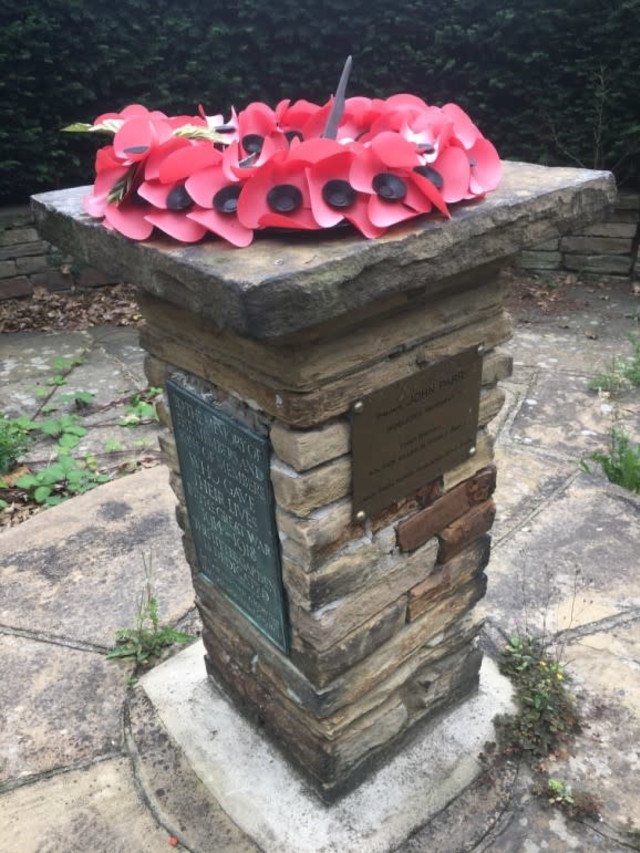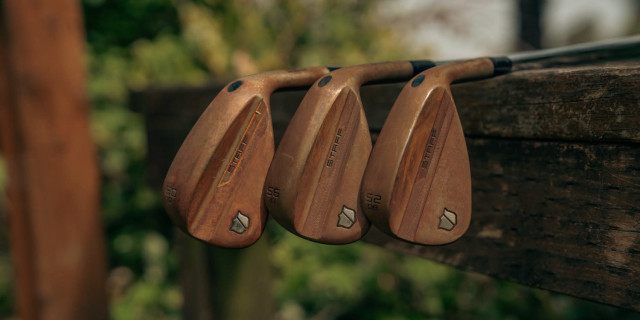
Wartime History of Golf #1 - Caddie was the First Casualty of WW1
Golfshake Ambassador Andrew Picken has a passion for golf and researching the history and tales behind the courses that we play on. Much of his recent interest has centered on the First World War, a topic that is timely due to the upcoming centenary of Armistice Day that brought the Western Front of that conflict to an end in 1918. Those events affected everyone, not least of all those connected with golf. In this series of articles, Andrew has explored the connections between those wartime years and the game.
Private John Henry Parr (19 July 1897 – 21 August 1914) was a British soldier. He is believed to be the first soldier of the British Commonwealth to be killed by enemy action in the First World War.
Parr was born in Lichfield Grove, Finchley, now in the London Borough of Barnet. His father was a milkman. He lived most of his life at 52 Lodge Lane, North Finchley, the youngest of eleven children of Edward and Alice Parr. Many of his siblings died before their fourth birthday.
Featured Content
Upon leaving school, he took a job working as a butcher's boy, and then as a caddie at North Middlesex Golf Club. It is clear that he persuaded the Caddie Master at the club to support his fraudulent application to join the army. Like many other young men at the time, he was attracted to the army as a potentially better way of life, and one where he would at least get two meals a day and a chance to see the world.
The 5'3" tall Parr joined the 4th Battalion of the Middlesex Regiment in 1912, aged fifteen, but claimed to be eighteen years and one month old to meet the minimum age requirement. Private Parr specialised in becoming a reconnaissance cyclist, riding ahead to uncover information then returning with all possible speed to update the commanding officer. At the start of World War I in August 1914 Parr’s battalion was shipped from Southampton to Boulogne-sur-Mer, France.
With the German army marching into Belgium, Parr's unit took up positions near a village called Bettignies, beside the canal running through the town of Mons approximately 8 miles (13 km) away. On 21 August, Parr and another cyclist were sent to the village of Obourg, just north east of Mons, and slightly over the border in Belgium, with a mission to locate the enemy. It is believed that they encountered a cavalry patrol from the German First Army, and that Parr remained to hold off the enemy whilst his companion returned to report. He was killed in the ensuing rifle fire.

Since the British army retreated to a new position around the Marne after the first battle of Mons, Parr's body was left behind. In the ensuing months, the slow entrenchment of the war meant that news of Parr's death was not recognised until much later. After a while his mother wrote to the regiment asking about her son, but they were unable to tell her of his condition, and it may have been that they thought that he had been captured. At the time, there were no dog tags to help with the identification of casualties. The circumstances of his death remain unclear: the front line was approximately 11 miles (18 km) away, and he may have been killed by friendly fire rather than a German patrol.
On 21 August 2014, the 100th anniversary of Parr's death, a memorial paving stone was ceremonially unveiled in the pavement outside 52 Lodge Lane. The ceremony was attended by about 300 people, including local dignitaries and Parr family members, one of whom read a letter from his mother to the War Office written in October 1914 to enquire about him. A plaque has also been placed in the golf club where he worked as a caddie.
It was organised by Martin Russell, the Representative Deputy Lieutenant for Barnet. Around 300 people attended to hear speeches on John Parr's life from the Mayor of Barnet, Hugh Raynor, and from Barry Anderson and Katherine Loveday, both from the Barnet War Memorials Association. Many of the Parr family were also there and John Parr's great niece, Mrs Iris Hunt read out a copy of a letter from his mother to the War Office trying to find out what had happened to her missing son.
Speaking after the ceremony, Theresa Villiers MP said "I have been to many events to mark the outbreak of the First World War over recent weeks but this was the most moving of all. The sacrifice made by thousands of men from across the UK and the Commonwealth was made painfully clear as we all reflected on the bravery of a 17 year old boy who was the first member of the British Army to die in the line of duty in World War One. To mark his loss with a ceremony and memorial stone outside his family's little house in Finchley brought home some of the reality of the awful scale of human suffering that the Great War inflicted and the astounding courage and dedication of the men who served in that conflict."

"The fact that around 300 people turned out for this commemoration event shows that a hundred years on, Barnet still remembers the fallen and respects their heroism and courage."
For more information, visit The Royal British Legion.
To hold a fundraising pub quiz at your golf club, visit The Royal British Legion Pub Quiz.
Image copyright: All images are reproduced with agree permission and not available for reuse, copyright applies.
Tags: Wartime History of Golf









